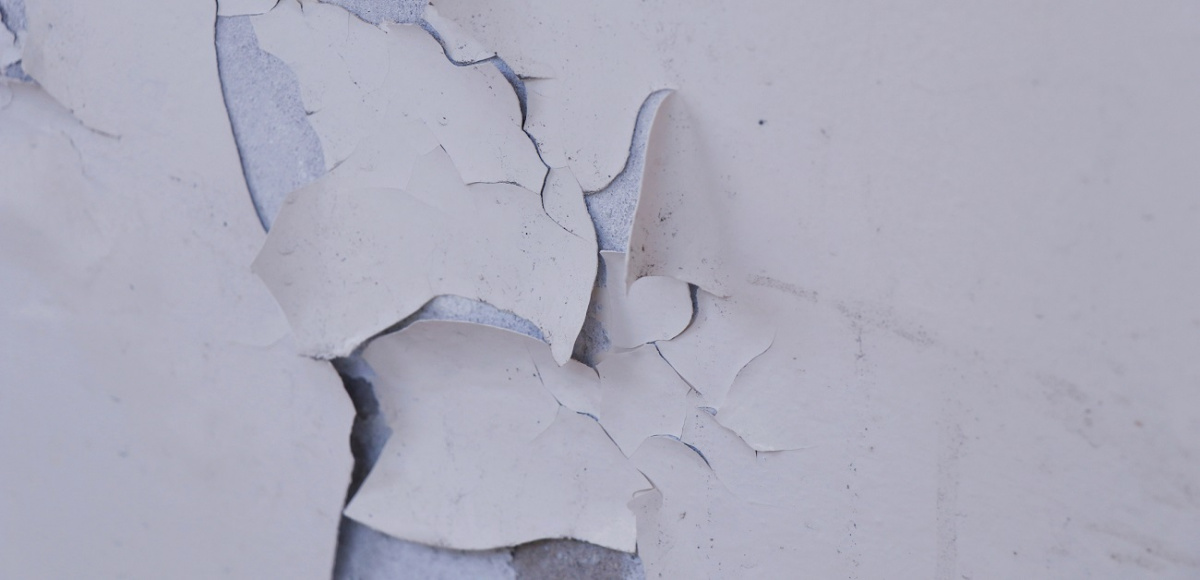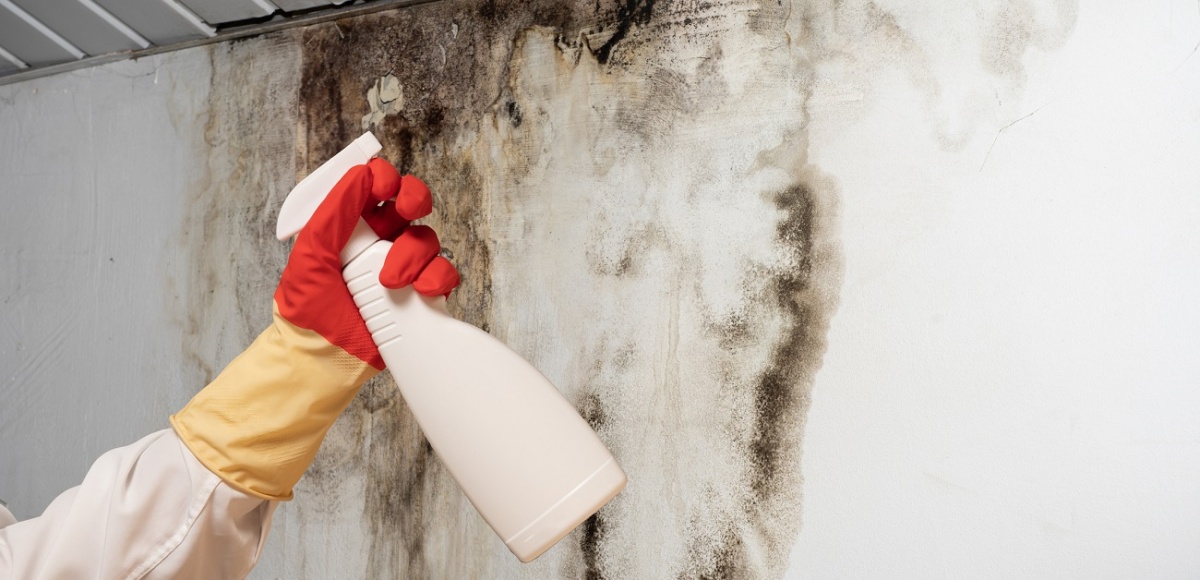
By: Melissa Dittmann Tracey via NAR Magazine/National Assocation of Realtors
Could that fixer-upper be a health nightmare? It’s a question worth asking after Christina Hall, host of HGTV’s “Flip or Flop,” went public in December about being diagnosed with mercury and lead poisoning. She blames her symptoms—skin rashes, joint pain and swollen lymph nodes, among others—on “all the gross houses” she’s fixed and flipped over the last decade for television. Hall’s announcement has put a spotlight on the health hazards that often are lurking in the walls of aging homes.
“Many new homeowners get all starry-eyed when they’ve purchased an older or historic home with grand ideas of returning it to its former glory,” says Carol Alexander, a content specialist with Fixr.com, a home remodeling resource. “But they don’t realize that what they don’t know could kill them.”
Alexander says she became passionate about this topic when her granddaughter tested positive for high levels of lead shortly after her son sanded and repainted a Victorian-era farmhouse. “Thankfully, our experience turned out OK—but many do not,” Alexander says.
Remediation experts point to three common dangers in homes built prior to 1978 that can come with long-term health consequences: lead, asbestos and mold. “It is important that the homeowner have asbestos, mold and lead identified and removed prior to [renovation],” says Diana Melichar, president of Melichar Architects in Lake Forest, Ill. “Environmental consultants and contractors can test for air quality and dangerous materials, and then remove them.”
Telltale signs of problems, particularly mold, can be visual and even have a distinct odor. “If a home smells bad, there is usually a problem,” Melichar adds. But many of these health dangers are not obvious and can be particularly dangerous when renovators disturbing a home’s structure, causing spores to become airborne—and easily inhaled.
Real estate professionals can educate clients who wish to renovate about the importance of testing materials in older homes, says Shri Ganeshram, CEO and founder of Awning.com, a website that advises investors on rehab projects. In a real estate transaction, disclosures about known issues with the home also are required.
“Be careful if you’re renovating to flip the home and discover these hazards in the process,” says Joe Tolzmann, CEO of RocketPlan, a property restoration management firm based in Palo Alto, Calif. “Failure to disclose the problems properly during the sale could potentially lead to lawsuits from the home buyers, especially if they come down with a serious illness due to previous asbestos, lead or mold issues with the property.”
Identifying Issues in Older Homes
“I’ve been in the restoration and remediation industry for 15-plus years,” Tolzmann continues, “so I can tell you that asbestos, lead and mold are the top three hidden dangers that pose health risks to any homeowner looking to renovate their older home. They can’t be seen with the naked eye, so it takes experienced professionals with special tools to detect their presence.”
Tolzmann says that all three can become airborne when disturbed. “They can quickly enter and spread through the HVAC system and cross-contaminate areas of the building, as well as furniture, clothing, and drapes,” he adds. “Certain items can’t be restored once contaminated.”
Abatement firms can handle the safe testing and removal of such dangers when their presence is suspected. Here’s an overview of these three hazards.
Lead
- Where it’s found: paint, plumbing fixtures, dust and soil in and around a home
- Which homes are most at risk: Properties built prior to 1978, when the federal government banned the use of lead-based paint in home, may be at greater risk. Homeowners are required to disclose the presence of lead-based paint when selling a home. Peeling, chipping and cracking on lead-based paint or lead pipes should be addressed immediately by professionals.
- Health risks: headaches, abdominal pain and anemia, among other health concerns. Lead poisoning is particularly dangerous for children; it can affect brain development, the nervous system and digestive organs.
- What to do: Consult a certified lead professional before renovating, repairing or painting when lead is present. Some home inspectors may even check for lead paint, according to Fixr.com.
Asbestos
- Where it’s found: Asbestos is a mineral composed of thin fibers that was commonly used prior to 1980 in insulation, flooring (e.g. vinyl flooring), roofing felt, board siding and sheathing, popcorn textures on ceilings and other building materials.
- Which homes are most at risk: Homes built before the 1990s. In 1989, the Environmental Protection Agency issued a ban on most products containing asbestos. When asbestos is present and its fibers get damaged or disturbed, they can become airborne and pose a danger when inhaled.
- Health risks: Often, there are no symptoms immediately following asbestos exposure. But in the long run, it can cause lung cancer and mesothelioma.
- What to do: Find out if asbestos materials are present before remodeling. Never saw, sand, scrape or drill holes into suspected asbestos materials. Do not touch or disturb suspected asbestos products. Many states require home sellers to disclose any known presence of asbestos to potential home buyers. If you’re unsure whether a home has asbestos, an abatement professional can take samples for analysis. If asbestos materials are found, they may be sealed or covered to prevent the release of its dangerous fibers inside the home. Often as a last resort, specialists will remove it, but this can be expensive and risky. DIY asbestos removal is not recommended.
Mold
- Where it’s found: Present in newer and older homes, mold can grow in humid places that have current or prior water exposure, such as from leaky roofs, windows or pipes. Mold can thrive in basements, bathrooms and under sinks. Mold also can grow on ceiling tiles and wood products as well as paints, wallpaper, insulation, drywall, carpet and upholstery.
- Which homes are most at risk: Homes with previous water damage and that have a lack of ventilation. Properties in humid climates also are at an elevated risk.
- Health risks: wheezing, red or itchy eyes, skin rashes, and an increased risk among children for developing asthma. Mold also can cause respiratory problems, especially for those with severe allergies.
- What to do: Mold that affects an area of less than 100 square feet inside a home often can be cleaned by the homeowner, with special precautions and productions, according to the EPA. A professional is strongly recommended to handle mold found in any larger space or when it’s caused by flooding or a leaky pipe. Without proper cleanup, mold can continue to spread. Mold growth on any drywall or insulation, for example, will need to be replaced, Tolzmann says. Some insurance companies may cover mold remediation, particularly if caused by a water leak.
Precautions to Take
Whether it’s mold, asbestos, lead or other dangers like radon and pest infestations, experts recommend taking some of the following precautions:
- Follow the laws and disclosures. Be sure to abide by all local and federal laws and regulations when it comes to lead and asbestos abatement, says Artem Kropovinsky, founder of design studio Arsight in New York. Local municipalities often have strict regulations for hazardous substance removal. Also, be sure to disclose the presence of any issues during a home sale. By law, home sellers must disclose the existence of any known lead-based paint as well as the result of any previous testing, for example. Real estate professionals and property managers must ensure buyers and tenants receive and review relevant information on lead-based paint hazards. Read more about this at nar.realtor.
- When in doubt, test it out. Hire a professional to check for lead, asbestos and mold before starting any renovation work. These three house dangers can pose particular health risks when disturbed during the remodeling process. Many companies that provide radon, lead or asbestos inspection services also provide mold assessments. Find a list of state contractors at EPA.gov.
- Follow proper procedures for removal. A professional abatement team is trained to safely remove lead, asbestos and mold from inside a home. They likely will wear masks, eye protection, and hazmat suits, as well as take precautions to enclose work areas to prevent it spreading to other parts of the home. Many states may have laws that will need to be followed to ensure safe removal of these products as well.
Still, these dangers needn’t scare buyers away from older homes, Melichar says. “Potentially hazardous materials come with the territory of renovating and rehabilitating older homes,” she says. “If handled correctly and remediated, there are no problems. Older homes have character and craftsmanship that is hard to replicate in today’s construction industry. They’re unique, and with proper TLC to rehabilitate them, they can be rejuvenated for decades of enjoyment for homeowners.”






